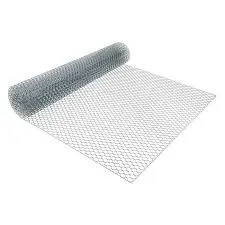-
+86 15030157877
-
sales@galvanizedmetalmesh.com
Dec . 07, 2024 03:39 Back to list
Exploring the Versatility and Uses of Binding Wire in Various Applications
The Versatility and Importance of Binding Wire in Construction and Craftsmanship
Binding wire, often referred to as tie wire, is an essential tool in various industries, particularly in construction and craftsmanship. This simple yet effective wire serves numerous purposes, from tying rebar for concrete structures to crafting intricate metal art. Understanding the properties, applications, and benefits of binding wire can illuminate its significance in both professional and creative endeavors.
What is Binding Wire?
Binding wire is typically made from mild steel, though it can also be constructed from other materials, including stainless steel and aluminum. The wire’s thin yet durable nature allows it to be easily manipulated while maintaining strength. Most commonly, binding wire comes in coils, ranging from 16 to 18 gauges, making it versatile for a variety of tasks. Its flexible properties allow it to be bent and twisted without breaking—a feature that is particularly valuable in construction and craft projects.
Applications in Construction
One of the primary uses of binding wire is in construction, particularly for reinforcing concrete structures. During the construction of foundations, walls, and other heavy-duty components, binding wire is used to tie together rebars. This ensures that the steel reinforcements remain securely positioned during the concrete pouring process, which is crucial for the structural integrity of the building. A well-tied rebar frame allows the concrete to cure around the steel, providing the necessary strength and support.
In addition to its function in rebar applications, binding wire is also used extensively in scaffolding. When erecting scaffolding systems, workers often use binding wire to secure various joints and connections. This ensures the platform is stable and can safely support laborers and materials. Overall, the binding wire's ability to hold components together makes it an indispensable tool in the construction industry.
Craftsmanship and Artistic Uses
binding wire

Beyond construction, binding wire finds its place in the realm of craftsmanship and artistic expression. Artists and craftsmen frequently utilize binding wire to create sculptures, jewelry, and decorative items. The pliability of the wire allows creators to manipulate it into intricate shapes and forms, resulting in unique pieces of art. For instance, wire art can range from delicate floral designs to robust, abstract sculptures, showcasing the endless possibilities when wielding this simple material.
Moreover, binding wire is an excellent medium for hobbyists. In DIY projects, it can serve as an effective tool for organizing and constructing various items. Crafters can use binding wire to create custom designs for home decor, from wreaths and garlands to beautiful wall hangings. Its affordability and availability make it an ideal option for individuals looking to engage in creative projects without breaking the bank.
Benefits of Binding Wire
The advantages of binding wire extend beyond its versatility. One of the notable benefits is its cost-effectiveness. Compared to other fastening materials, binding wire is relatively inexpensive, making it accessible for both professionals and hobbyists alike. It provides a reliable solution for many fastening needs without requiring substantial financial investment.
Another significant benefit is its ease of use. The lightweight nature of binding wire allows for easy handling, and it can be cut and shaped using standard tools. This means that both experienced tradespeople and novices can work successfully with the material, promoting creativity and innovation.
Lastly, binding wire is reusable and recyclable, making it an environmentally friendly choice. Once a project is completed, unused binding wire can often be unwound and utilized again, reducing waste. As sustainability becomes increasingly important in both construction and crafts, the use of materials like binding wire aligns with eco-friendly practices.
Conclusion
Binding wire, while seemingly simple, plays a crucial role in both construction and the arts. Its versatility, ease of use, and cost-effectiveness make it an essential tool for a wide range of applications. Whether it’s for securing rebar to ensure a building's structural integrity or creating art that captivates the imagination, binding wire proves to be a valuable asset. As industries continue to evolve and creative outlets expand, the importance of binding wire remains steadfast, reinforcing its place in construction and craftsmanship alike.
-
Welded Gabion Solutions: Durable & AI-Enhanced Designs
NewsAug.01,2025
-
Premium Welded Gabion Mesh | Robust & Eco-Friendly
NewsJul.31,2025
-
Premium Eco-Friendly Roof Tiles | Affordable & Durable
NewsJul.31,2025
-
Premium Roof Tiles for Durable & Stylish Roofing Solutions
NewsJul.30,2025
-
High-Quality Roof Tiles for Durable & Stylish Roofing Solutions
NewsJul.29,2025
-
High Quality Square Wire Mesh Manufacturer & Supplier for Wholesale
NewsJul.29,2025



